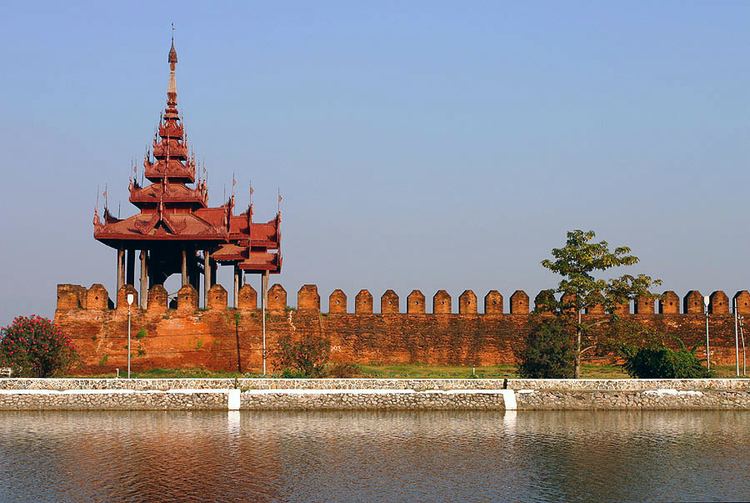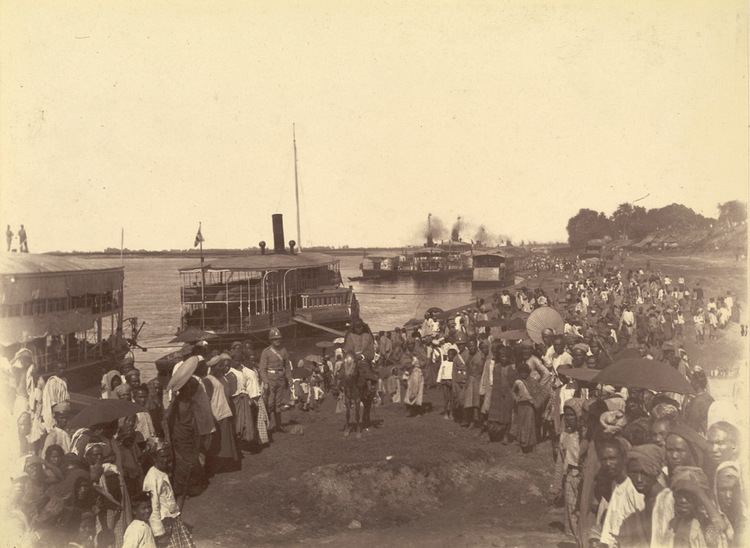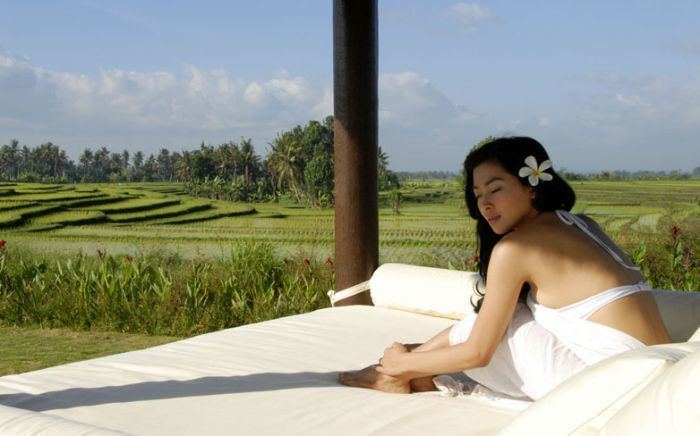Country Burma Area 163.84 km2 | Region Mandalay Region District Mandalay District Mayor Aung Maung Population 532,949 (1983) | |
Points of interest Colleges and Universities Yadanabon University (Amarapura), Mandalay University (Mandalay), University of Medicine - Mandalay (Chanayethazan Township), University of Foreign Languages - Mandalay (Mandalay), University of Computer Studies - Mandalay (Mandalay) | ||
Mandalay ( or Burmese: ???????????? MLCTS=manta.le:; MLCTS: {{{MLCTS}}} ) is the second-largest city and the last royal capital of Burma. Located 716 km (445 mi) north of Yangon on the east bank of the Irrawaddy River, the city had a population of 1,225,553 (2014 census).
Contents
- Map of Mandalay
- Jade market mandalay myanmar burma noodlies sydney food and travel blog
- Rokheng mandalay and bagan tour hd 04th june2013
- History
- Geography
- Culture
- Economy
- Mandalay in popular culture
- Burmese street food adventures bread flippers of mandalay
- Burmese food burmese set lunch at the mandalay inn restaurant in siem reap cambodia
- Best mexican food las vegas border gril mandalay bay
- References
Map of Mandalay
Mandalay is the economic hub of Upper Burma and considered the centre of Burmese culture. A continuing influx of Chinese immigrants, mostly from Yunnan, in the past twenty years, has reshaped the citys ethnic makeup and increased commerce with China. Despite Naypyidaws recent rise, Mandalay remains Upper Burmas main commercial, educational and health center.
Jade market mandalay myanmar burma noodlies sydney food and travel blog
Rokheng mandalay and bagan tour hd 04th june2013
History

Like most former (and present) capitals of Burma, Mandalay was founded on the wishes of the ruler of the day. On 13 February 1857, King Mindon founded a new royal capital at the foot of Mandalay Hill, ostensibly to fulfill a prophecy on the founding of a metropolis of Buddhism in that exact place on the occasion of the 2,400th jubilee of Buddhism.

The new capital city site was 66 km2 (25.5 sq mi) in area, surrounded by four rivers. The plan called for a 144-square block grid patterned citadel, anchored by a 16 square block royal palace compound at the center by Mandalay Hill. The 1020-acre (413-hectare) citadel was surrounded by four 2,032 m (6,666 ft) long walls and a moat 64 m (210 ft) wide, 4.6 m (15 ft) deep. At intervals of 169 m (555 ft) along the wall, were turrets with gold-tipped spires for watchmen. The walls had three gates on each side, and five bridges to cross the moat. In addition, the king also commissioned the Kuthodaw Pagoda, the Pahtan-haw Shwe Thein higher ordination hall, the Thudhamma Zayats or public houses for preaching the Doctrine, and the library for the Buddhist scriptures. In June 1857, the former royal palace of Amarapura was dismantled and moved by elephants to the new location at the foot of Mandalay Hill although construction of the palace compound was officially completed only two years later, on Monday, 23 May 1859.
For the next 26 years, Mandalay was to be the last royal capital of the last independent Burmese kingdom before its final annexation by the British. Mandalay ceased to be the capital on 28 November 1885 when the conquering British sent King Thibaw and his queen Supayalat into exile, ending the Third Anglo-Burmese War.
Geography

Mandalay is located in the central dry zone of Burma by the Irrawaddy river at 21.98° North, 96.08° East, 64 meters (210 feet) above sea level. Its standard time zone is UTC/GMT +6:30 hours.
Mandalay lies along the Sagaing Fault, a tectonic plate boundary between the India and Sunda plates. (The biggest earthquake in its history, with a magnitude of 7, occurred in 1956. The devastation was greatest in nearby Sagaing, and it came to be known as the Great Sagaing Quake.)
Culture
Mandalay is Burmas cultural and religious center of Buddhism, having numerous monasteries and more than 700 pagodas. At the foot of Mandalay Hill sits the worlds official "Buddhist Bible", also known as the worlds largest book, in Kuthodaw Pagoda. The styles of Mandalay Buddha Images and Buddha Statues were many since King Mandon, who was a devout Buddhist, and had filled Mandalay with them and through the years Mandalay Buddhist art became established as the pure art of Myanmar. There are 729 slabs of stone that together are inscribed with the entire Buddhist canon, each housed in its own white stupa. The buildings inside the old Mandalay city walls, surrounded by a moat, which was repaired in recent times using prison labor, comprise the Mandalay Palace, mostly destroyed during World War II. ?t is now replaced by a replica, Mandalay Prison and a military garrison, the headquarters of the Central Military Command.
Economy
Mandalay is the major trading and communications center for northern and central Burma. Much of Burmese external trade to China and India goes through Mandalay.
